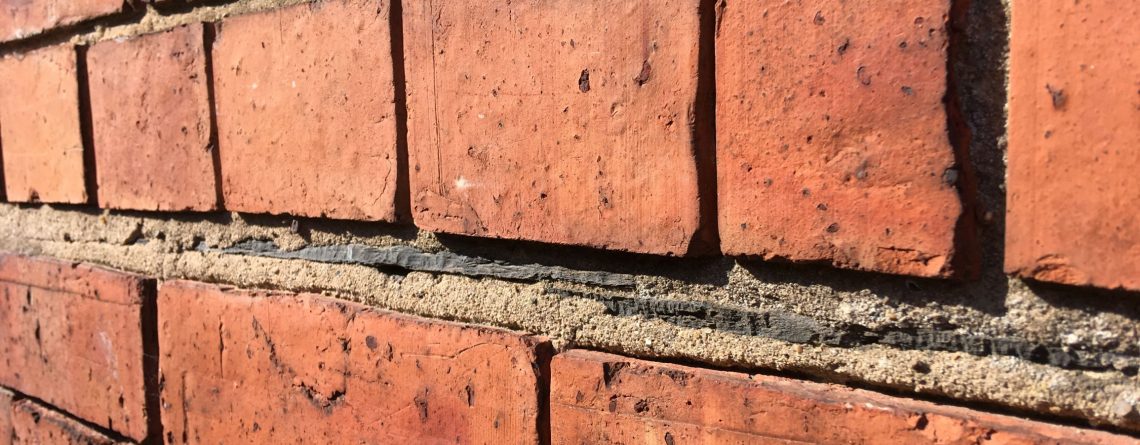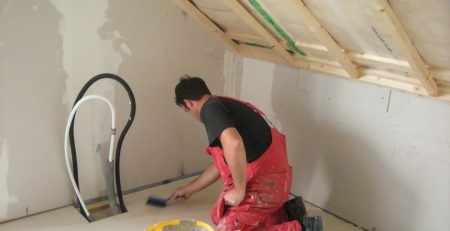How Much Does A Damp Proof Course Cost?
Damp conditions in houses and buildings are normally exacerbated by condensation or damp penetration.
And in some relatively rare instances, rising damp is the source of damp problems. Such forms of damp may lead to serious problems for home and property owners.
Damp can wreck the interior decor, ruin carpets including woodwork, and, in extreme situations, inflict structural damages. Damp would also make your house feel unpleasant.
Most people delay early treatment of damp due to the possible cost of damp proofing, they assume the procedure is expensive and complicated. It’s not always the case.
By delaying damp treatment, the condition may escalate and get more costly.
When your own property is experiencing damp, surely the best thing to do is respond immediately, as it will save you a lot of trouble, wasted time, and money.
Problems That Damp Can Cause
How then do you know if your house is having a damp? Besides the obvious, there is a range of things to watch out for. The indications may imply whether it is far from being a serious problem which you can handle yourself, or a major issue that will need the assistance of a damp specialist.
Black mold patches are a big threat and can cause long-term respiratory problems. Other signs of damp problems involve flaking paint including wallpaper, rotting skirting boards, watermarks, and salt stains on walls and floors.
A serious damp problem could adversely impact the framework and strength of your house if left untreated.
What Causes Damp in a Home?
There are several reasons why damp happens at home, but the most common factors include condensation as well as higher air moisture created while using a dryer or drying clothes indoors.
Two of the most frequent areas plagued by dampness are the kitchen & bathroom since these rooms produce a large volume of air moisture while heating, cooking, or taking a shower.
Damp may also develop due to damages in the roof, plumbing, and roof tiles, that can cause erosion, moulding, and decay. Damaged rendering may even induce penetrating dampness because the moisture can inevitably penetrate the stone or brickwork.
One potential source of damp is by your doors and windows, that may not be tightly shut, leading to water leaking into your house. You may also need to inspect the wall insulation, because it may be susceptible to moisture, especially when it is not maintained properly.
Also, spill accidents may cause damp, any liquid substance can end up causing walls and skirting boards to rot.
And the same could be said about the plants that may grow on your roof, which find its way into the exterior walls and create dampness in your property.
Different Types of Damp
Before considering whether your house requires damp proofing, you have to evaluate the kind of damp, the origin of the problem is, or what you can do to mitigate it.
If you recognize where the issue emanates, it is, therefore, a smart idea to go through the elimination process beforehand, in order to prevent any needless and unwanted costs.
Condensation
Without adequate ventilation, moisture accumulates inside your house or property, likely to result in spores or even mould. Condensation is among the most common forms of damp that can be quickly fixed by using moisture-proof paint to the walls. This could be applied as any other form of an emulsion.
Small measures like opening the windows more frequently, washing laundry outdoors rather than indoors, as well as using exhaust fans in baths and kitchens tend to decrease the level of heat and moisture. Also, maintaining the heating at a lower temperature will help reduce dampness. You may also invest in a dehumidifier which decreases & regulate humidity.
Penetrating Damp
One of several best ways to avoid penetrating damp is by cleaning and unclogging the gutters including the downpipes. This will remove any weeds, thus preventing leakage from happening.
When your own property has a cavity wall, there might be debris between each of the outer and inner walls, causing a bridging effect. In the same way, the insulation of the cavity wall may even transfer dampness to the inner walls, where the outer wall is weakened from moving winds and rain.
Other reasons for penetrating damp may be spills from broken slate or tiles in the roof. From within, you might have a problem with a leaking pipe, cracked tiles or grout, or seepage out of the tub or bath.
Rising Damp
Rising damp, one of the issues with dampness that has always require the aid of damp proofing specialist.
It is usually triggered by the moisture underneath the ground, which grows and passes through the walls. Although fairly uncommon, it is a problem that can cause trouble by being the most difficult to deal with in the long run.
That being said, it is now possible to obtain a Custom damp-proofing set to substitute your damp-proof layer and repair rising damp.
Review your current damp-proof course/DPC outside, which would be 150mm/6′′ beyond ground level. Construction laws made it mandatory on all houses constructed after 1875, so if your home was built before then, it may not DPC on it
There would be a small strip or grill at the end of the wall to signify the existence of a DPC.
If the soil depth is elevated than the damp-proof course, this would have to be dug out again. Likewise, if a patio is built above that of the DPC, it would need to be adjusted.
Effective Damp Proofing Solution- Damp Proof Course
Construction techniques have evolved over the years, as do the Damp Proof Courses/DPCs used in houses and buildings.
Ages ago, several homes utilized slate tiles, but with the current plastic damp course, the cost is much smaller, becoming the new standard. In so many new construction works, stainless steel is often used.
All these DPCs are excellent for building, but we must know what is appropriate for renovation as homeowners.
Here are the most popular choices for home DPC installations:
- Pore blocking salt mixtures: This is a cement-based plaster which requires further injection and is mainly for stone walls.
- Osmotic water repellents: Wires remains directly embedded in the wall and repels water penetration actively or passively.
- Water repellent chemicals: These are injectable creams, gels, or pastes, suitable for DIY and professional use in any wall type.
DIY Chemical injection Damp Proof Courses
On the market, there are a variety of high-quality chemical DPCs. They work reliably and produce excellent results when correctly mounted. Yet damp proofing experts historically found it impossible for other “messier” approaches to produce successful results.
Only disposable cartridges that match in a normal skeleton gun is the only thing required. These are perfect for DIY retrofitting. In 2 minutes or less, any hole is filled.
Moreover, the substance used is less dangerous for health and wellbeing and even during the process, leaks are reduced.
Multiple high-pressure commercial devices may also be used to inject the chemical into every wall, but others use a dripping device that adds waterproof liquids gradually for over 48 hours. The latest tools on the marketplace utilize creams that are squeezed into the troughs.
What Do I Need To Install Chemical Damp Proof Course?
- Safety Eye Goggles
- Face and Dust Mask
- Electric Hammer Drill & 12mm Masonry Drill Bit
- Skeleton Gun (400cc or 1000cc)
- Plastering Materials
- Wall plugs
Cost of Damp Proof Course
Measure the size of your house and the thickness of the walls in order to calculate the expense of a damp proof course.
Below is a guide on just how much DPC chemicals a wall requires to be damp-proof.
- For a 4.5” thick single wall, you will need 1 liter for every 9m from one side.
- For a 9” think cavity/double solid, 1 liter is needed for every 4.5m from one or both sides.
- For an 8” thick filled/solid wall, 1 liter for every 2m from both sides.
You can buy for around £20 for 310ml Dryzone cartridges, but you can save up more when you purchase 5 cartridges for less than £100.
For bigger projects or thick walls, you can get 600ml cartridge for about £35, or 3, for much less than £100.
Tips for Obtaining a Quotation
If you are a property engineer or perhaps a DIY enthusiast, you may be brave enough to try the DPC chemical injection. However, you might need to contact a trusted damp proofing specialist for large projects.
- Need to have at least 3 separate quotations
- Request for a cost breakdown, in particular, if additional measures such as plastering or paving works will be carried out.
- Search for comments and testimonials of previous clients. Valued experts get good reviews helping avoid excessive workload and costs.












